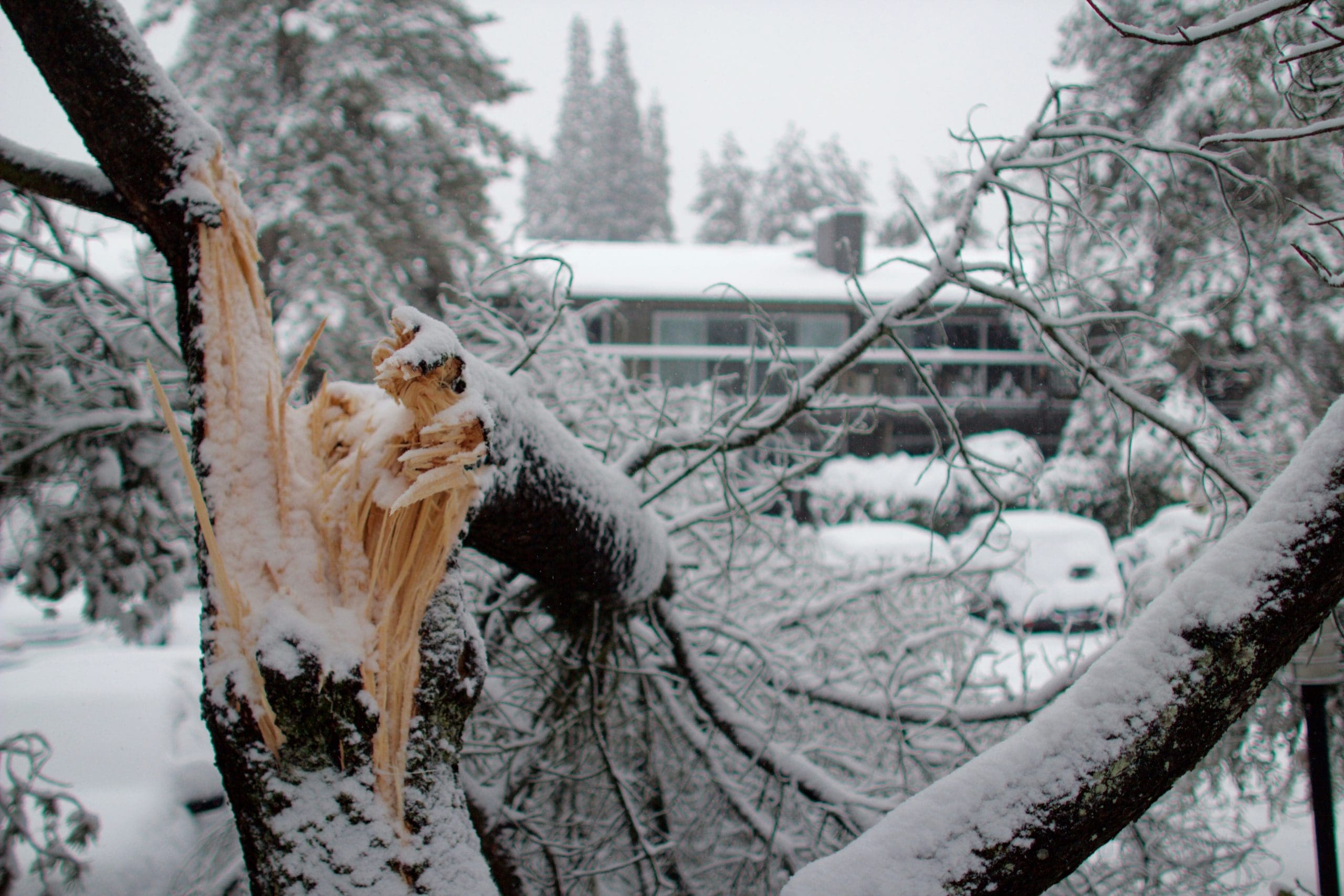
Winter can be a brutal season for trees, particularly in the northern regions where they have to deal with significant snow and ice storms.
Types of trees that are especially susceptible to winter damage include evergreen trees, soft-wooded trees, multi-leader trees and fastigiate trees. Evergreens’ dense crowns are more likely to catch and hold snow. While sometimes the branches can bend to accommodate the weight, other times they will break. Arborvitae, yews, junipers and hollies are more likely to be damaged by snow and ice buildup.
Soft-wooded or fast-growing trees like willow, birch and poplar have weaker branch strength. Similarly, multi-leader trees with more than one main leader are likelier to break. Fastigiate trees with upright branches also hold snow more than trees with spreading branches.
If your clients have recently experienced severe snow and ice storms, don’t hesitate to reach out proactively to assess any possible damage their trees might have experienced.
Dealing with Damage
There are a number of different causes for tree damage in the winter, including freezing, drastic shifts in temperatures, and heavy amounts of snow or ice accumulating on branches.
Signs to watch for when assessing a client’s trees are cracks in the tree trunk or limbs, significant root injury, broken or hanging limbs, leaning or fallen limbs. Stress fractures are harder to detect from the ground as they create a split in the wood horizontally within the branch when a load of snow is gone. If left unmanaged, they can result in a complete break in future storms.
Sudden rises in temperature can lead to sunscald. Symptoms include the bark changing colors, cracked callous tissues and cankers appearing on one side of the tree. Meanwhile, winterburn can turn tree tips brown from sun damage and drying from the wind.
The best way to care for trees suffering from sunscald is to keep the tree healthy with proper irrigation and to remove loose or dead bark that can serve as a hiding place for insects. Winterburn is mostly a wait-and-see game, as you’ll know by the spring if the plant’s affected branches are dead or if they will produce new growth to replace the damaged needles.
For damaged or hanging limbs, pruning will help the tree heal faster and prevent diseases and pests from infesting open wounds. If the tree is not a hazard to people or property, it’s best to wait and prune the damaged tree before bud break in the spring.
A major question customers are going to have if their tree is significantly damaged is, ‘Will the tree recover?’ This will vary case by case, but if the tree was healthy before the storm and has its leader, major limbs and more than half of its branches, it’s likely to survive given time and proper care.
You should remove any tree that’s lost its leader or more than 50 percent of its branches. If you have to remove a tree, discuss with the client replacing the tree with stronger species that can tolerate snow, ice and wind damage more often.
Young, recently planted trees that have blown over can typically be saved, but mature trees, trees with trunks over 10-12” in diameter, and those with over 1/3rd of their roots exposed that fall should be removed.
Preventing Future Damage
If your clients want to mitigate snowstorm damage to their trees in the future, encourage them to have you inspect their property before the forecasted inclement winter weather.
Pruning weak, broken or dead branches ahead of time removes the chance for them to fail during or after a snowstorm. Pruning for structural strength and durability also helps improve trees’ survival rates by encouraging strong branching.

